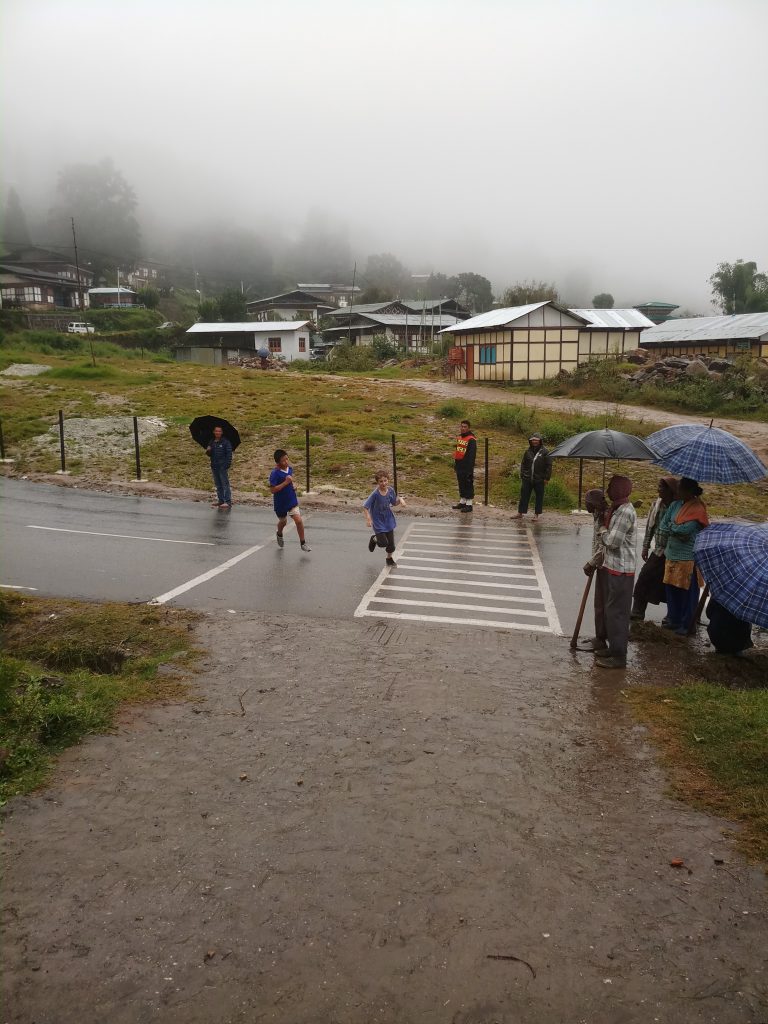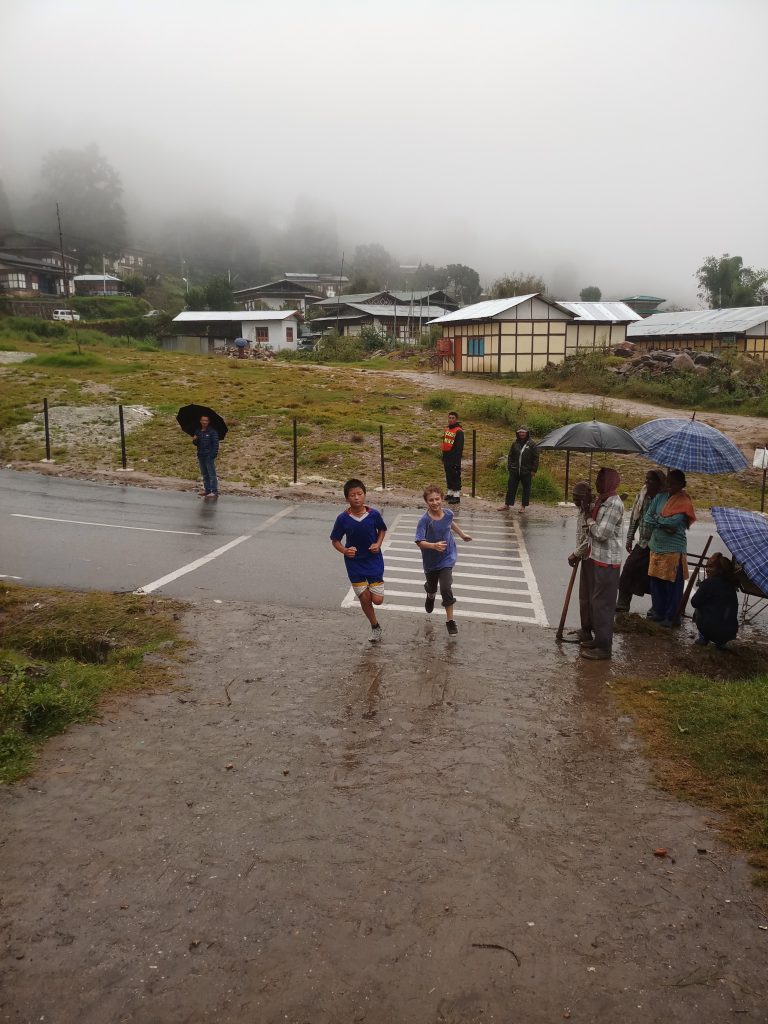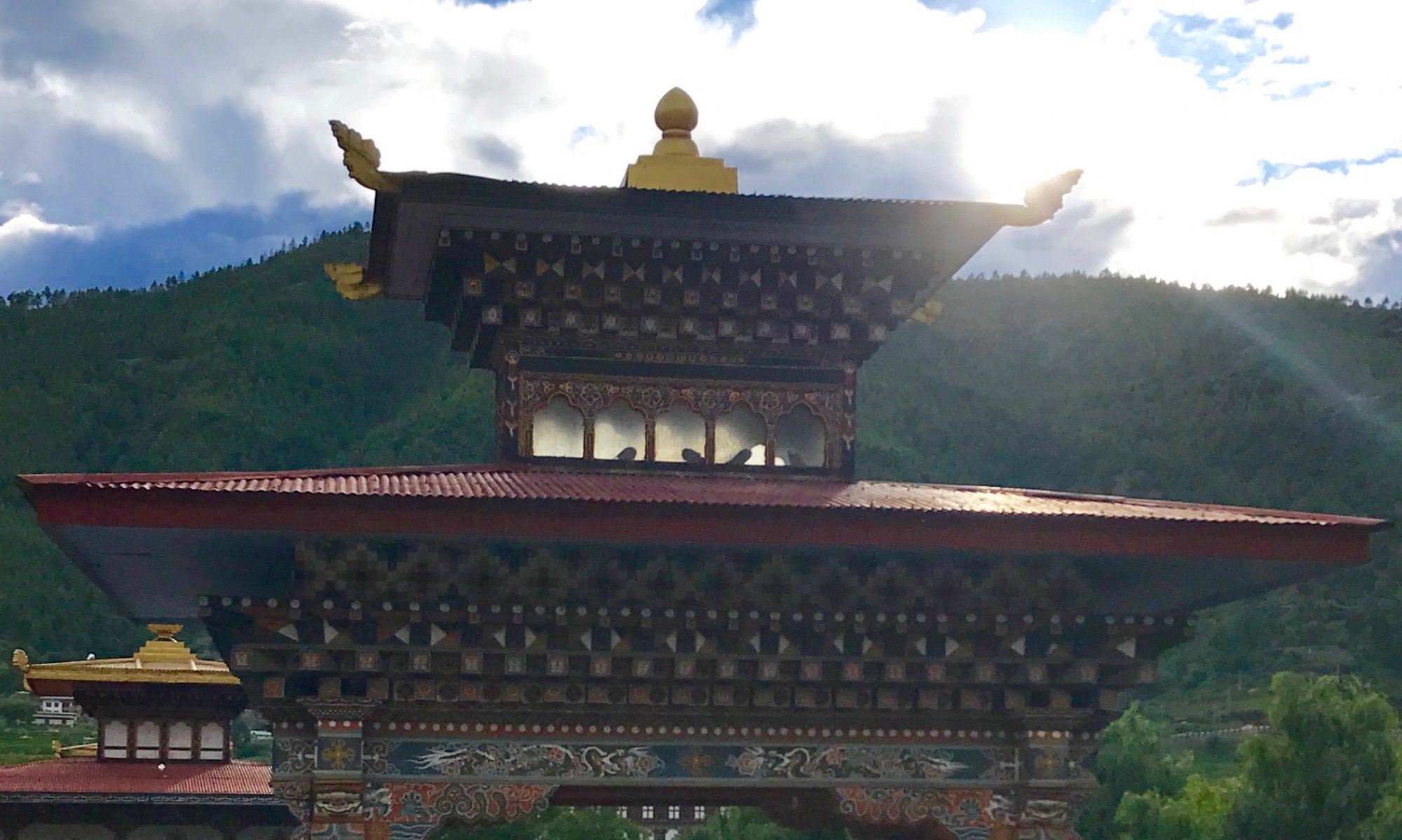Mid-week, Jeremy and I went on our standard walk and watched some archers practicing.
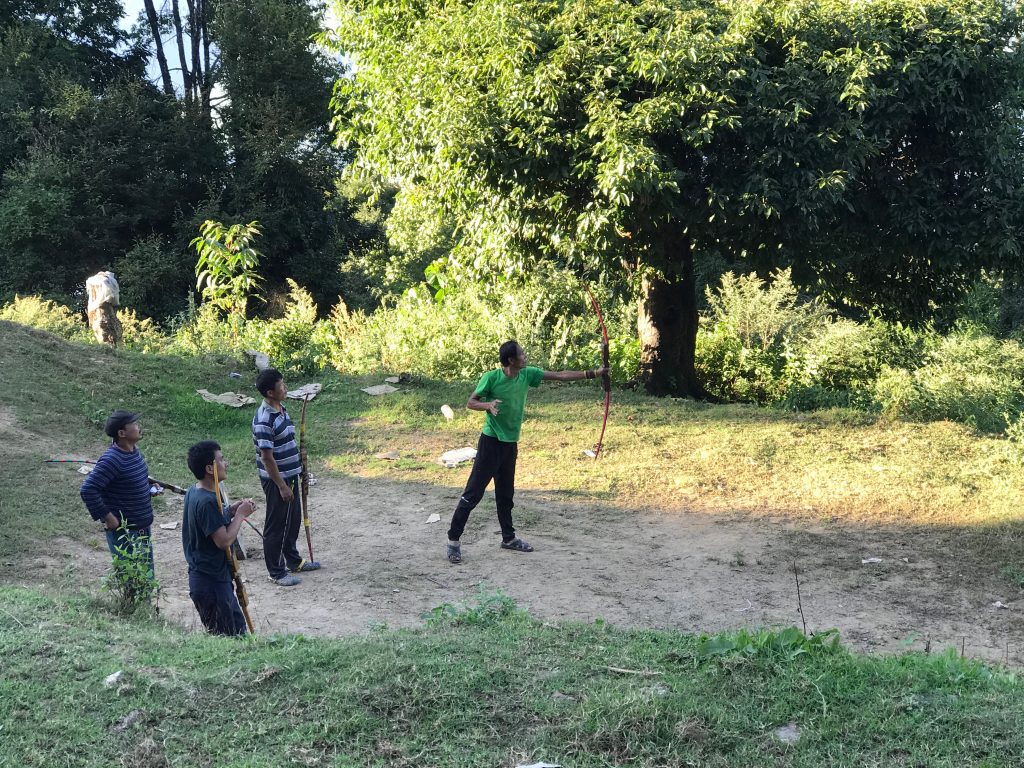
My walk up to Yonphula is the best commute in the world. On the way down the mountain, listening to the cowbells, I feel like Heidi (from the children’s book about the Swiss orphan who goes to live with her grandfather). This makes me wonder: why are there so many cows in Bhutan? Presumably an extension of Indian/Hindu reliance on cows?
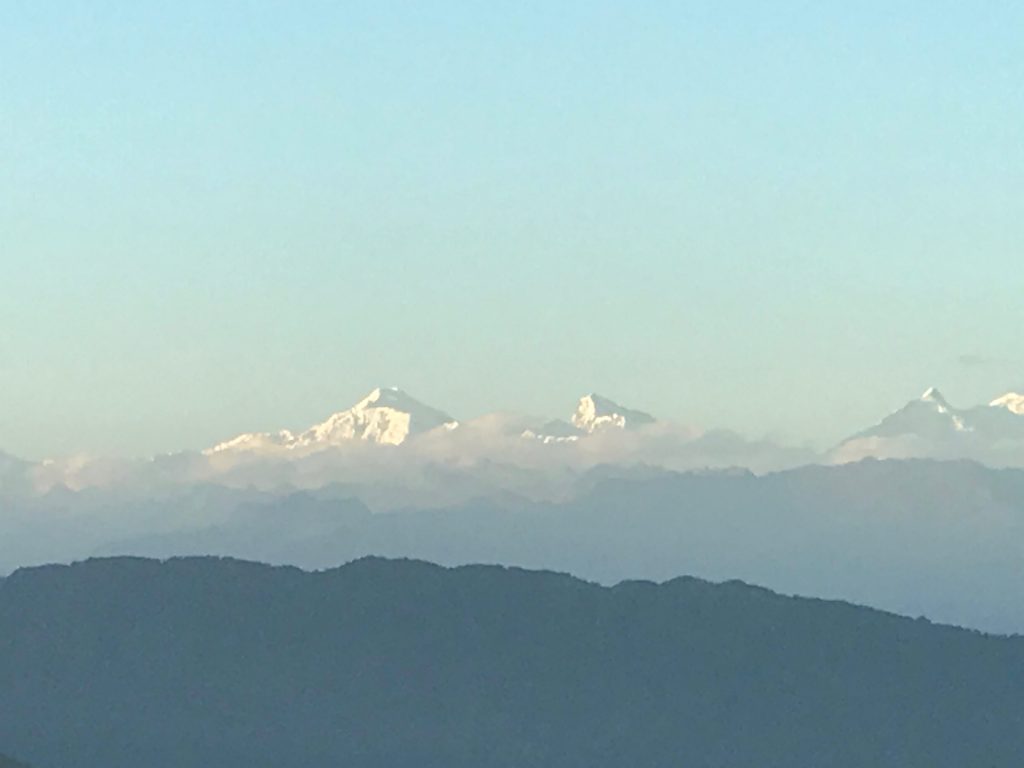
Friday
On Friday I have no classes so in the afternoon we all went as a family to Khaling in order to look at the Handloom Centre just past town. We had intended to go in the morning, but we hadn’t managed to make arrangements the day before. In the morning, I called the Handloom Centre to be sure they would be open; James called Leila’s taxi driver (Tashi); and we were good to go.
We waited just a short while for some road clearing work.
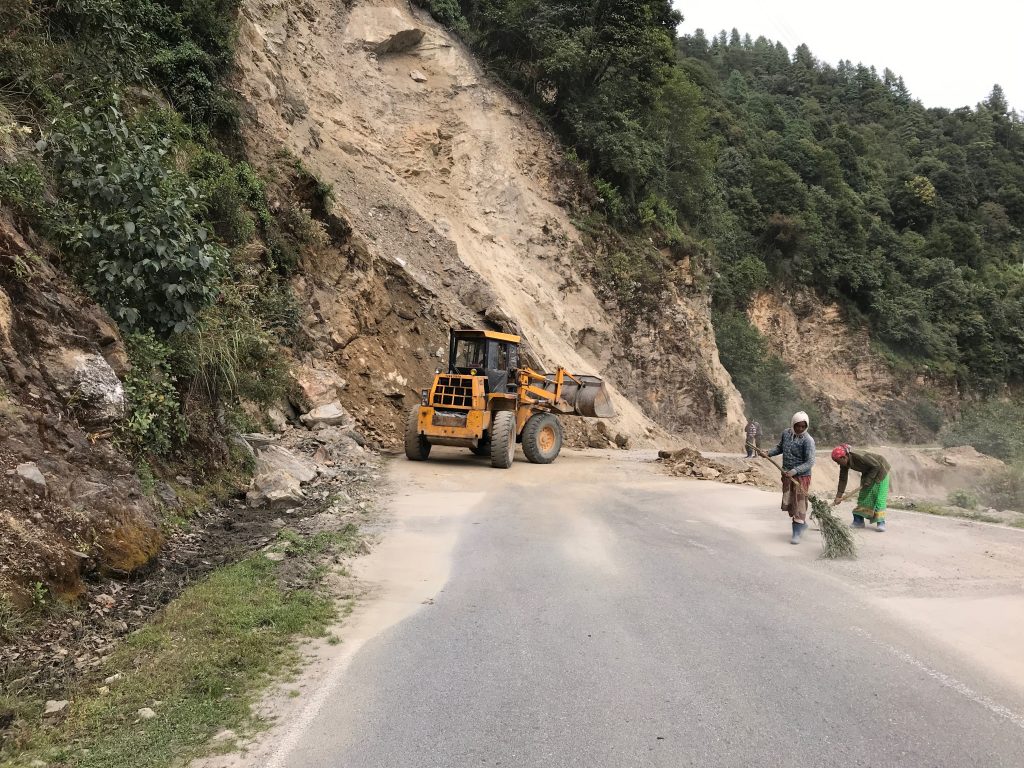
Our eyes were caught by a small monastery on the roadside; Tashi pointed to the new, larger monastery up the hill on the other side of the road.
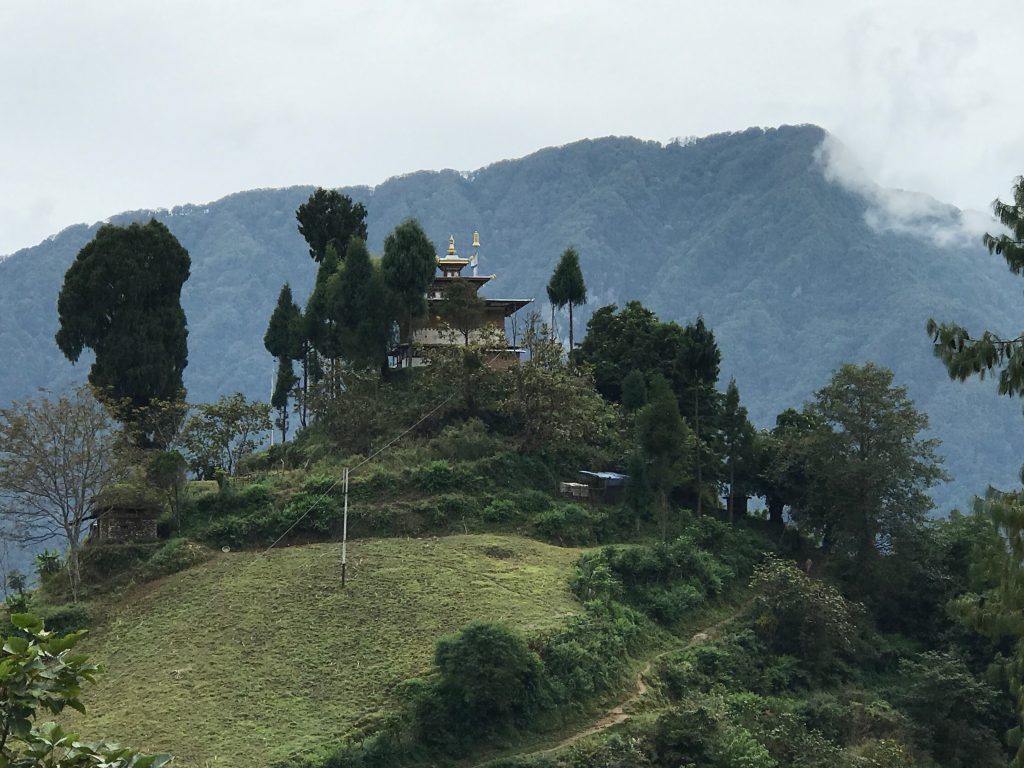
The National School for the Blind is an entire village spread down a hillside.
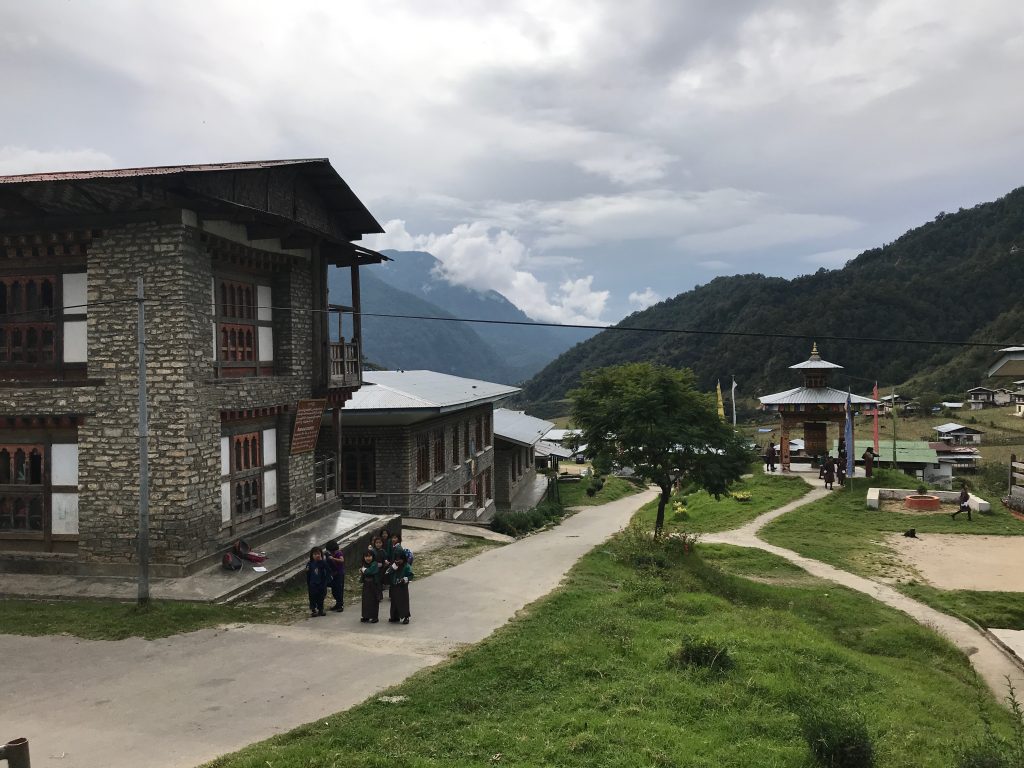
The Handloom Centre itself was smaller than anticipated—both in its buildings and in the number of weavers present.
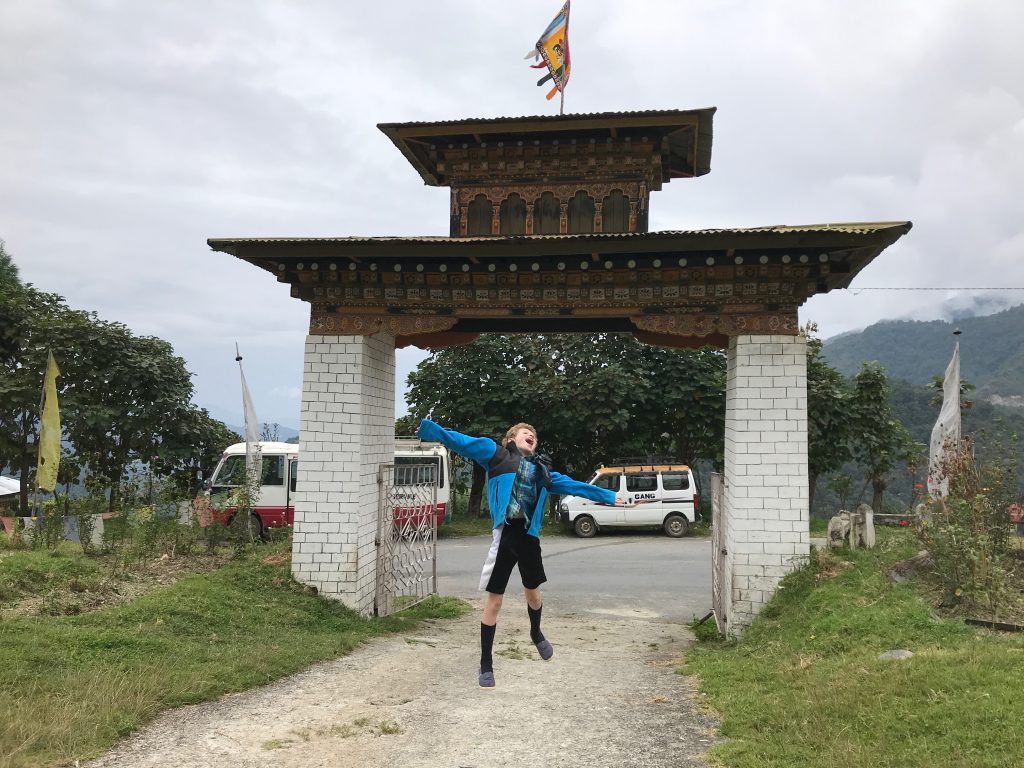
The official word is that six weavers are being trained at a time, but there were only two weavers present (and only two looms in use).
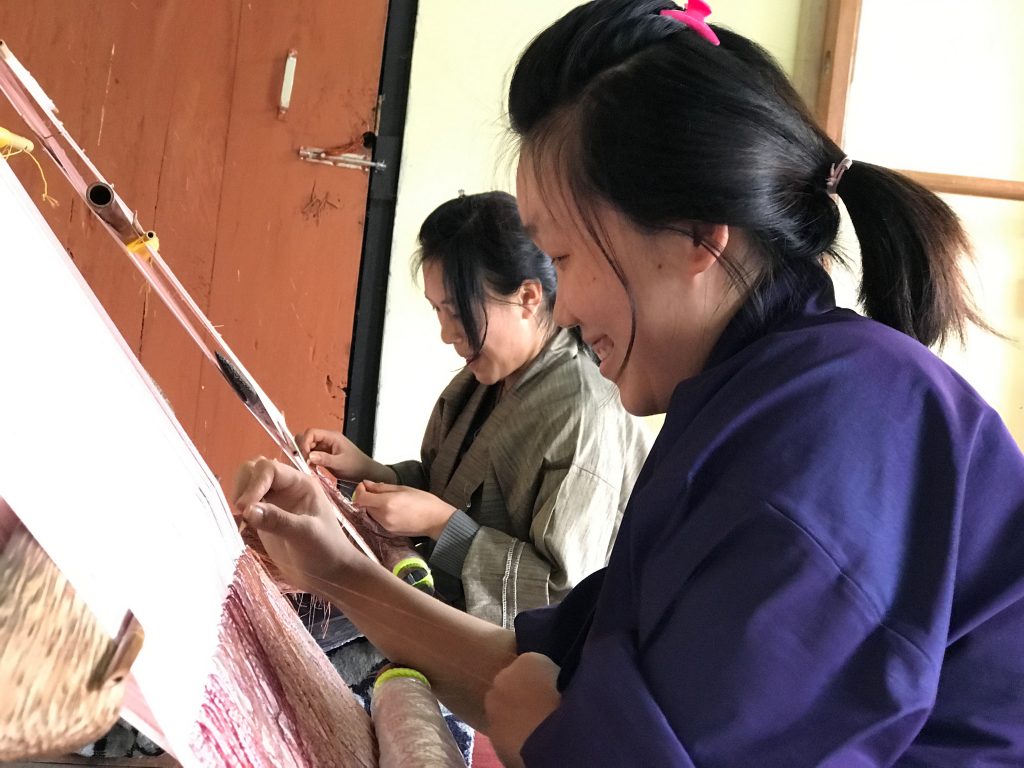
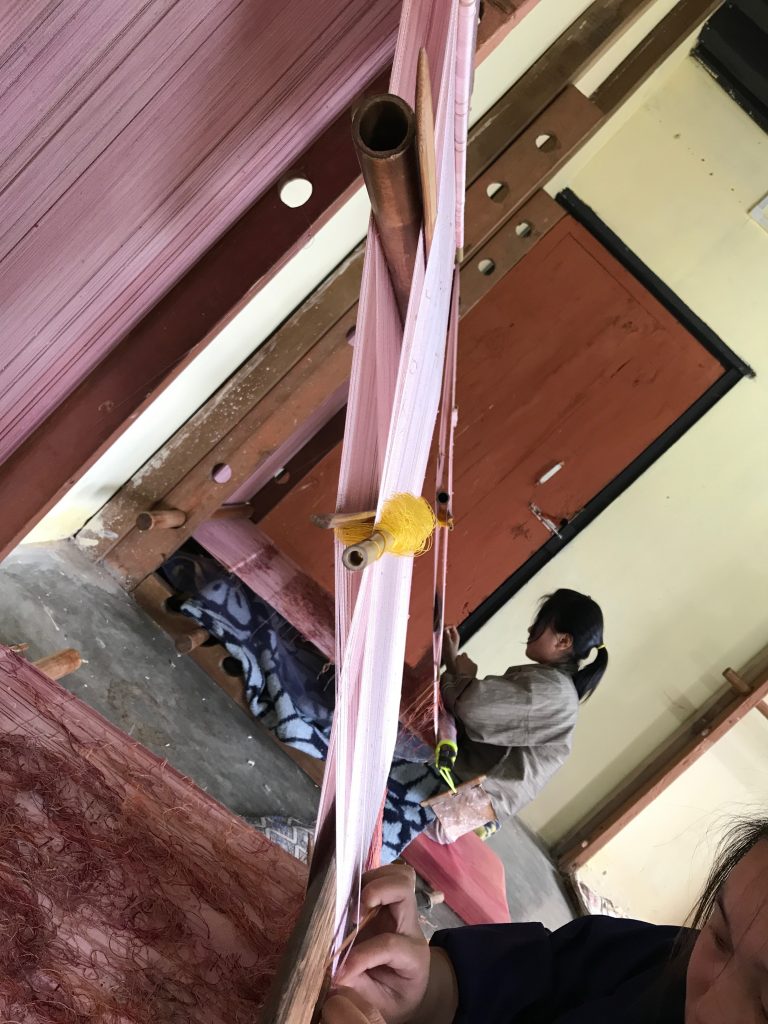
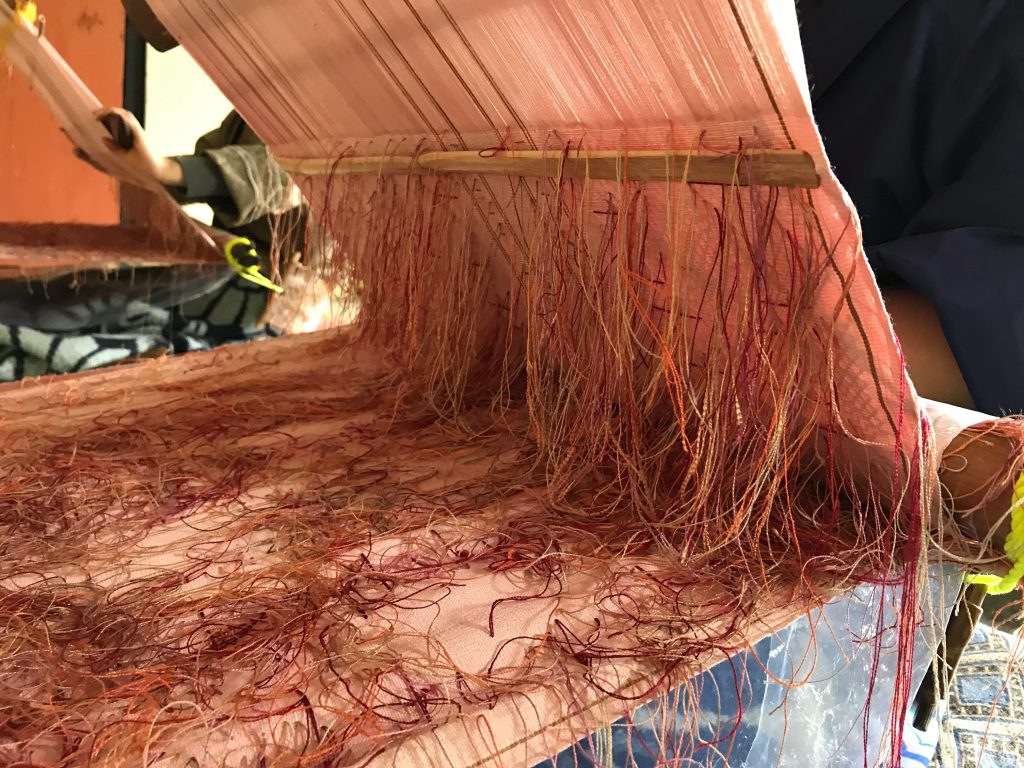
The showroom included many old photos of natural dyes.
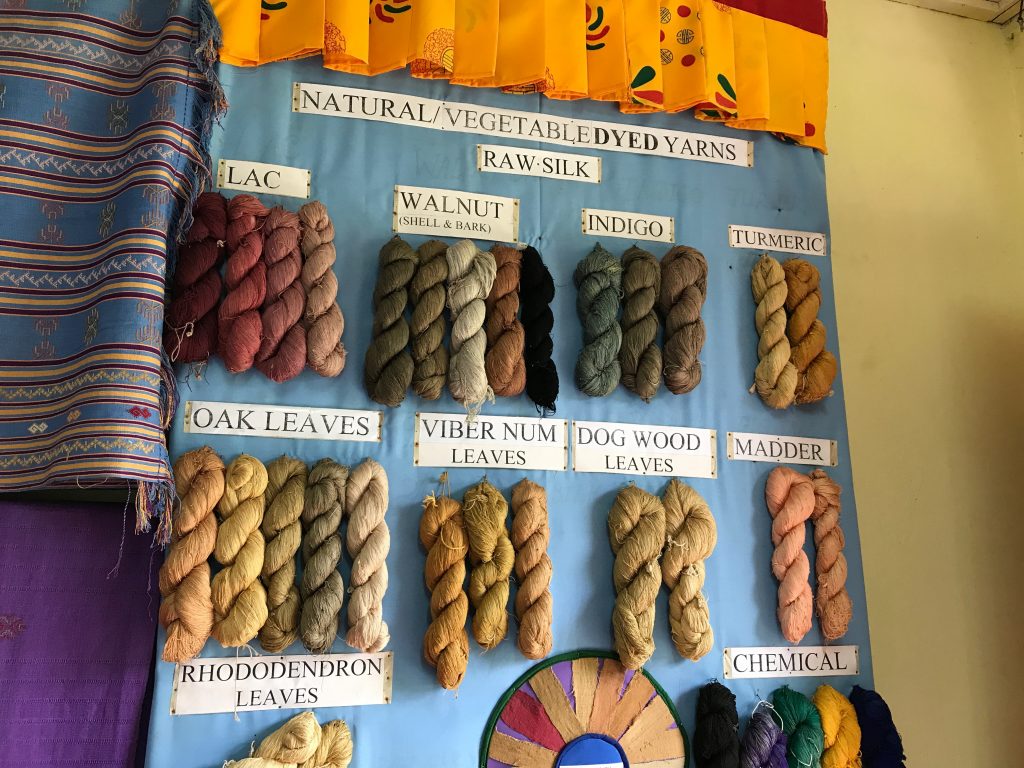
Lac is cochineal, imported from India. The others are mostly plants common to the northeast USA as well as Bhutan.
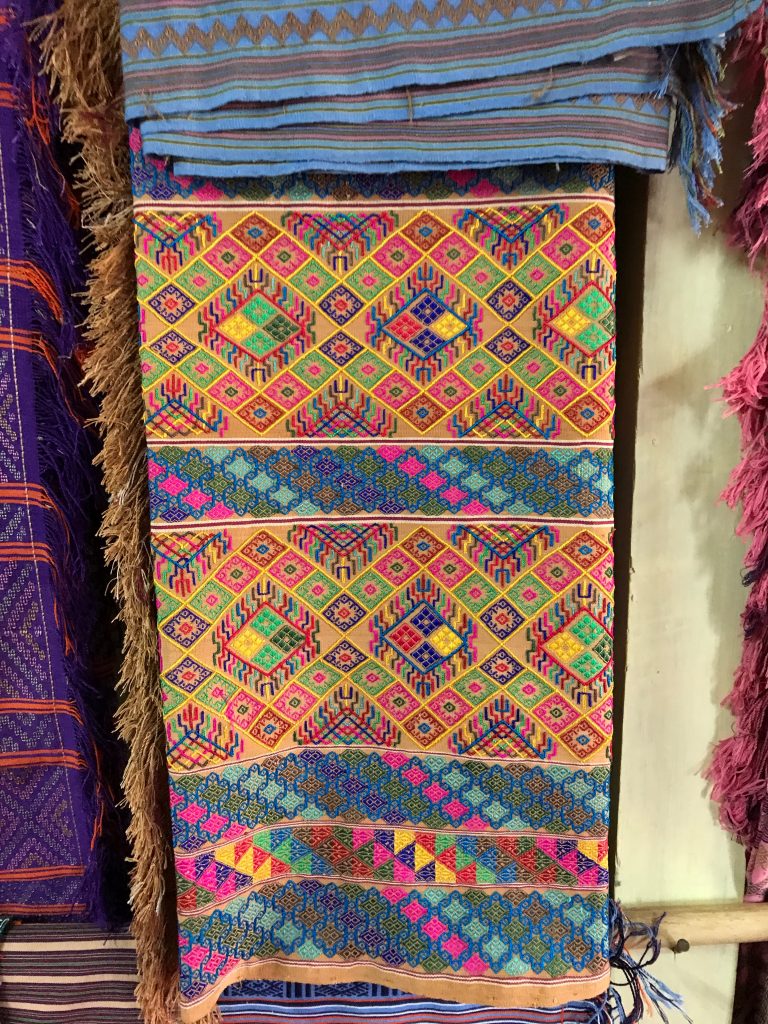
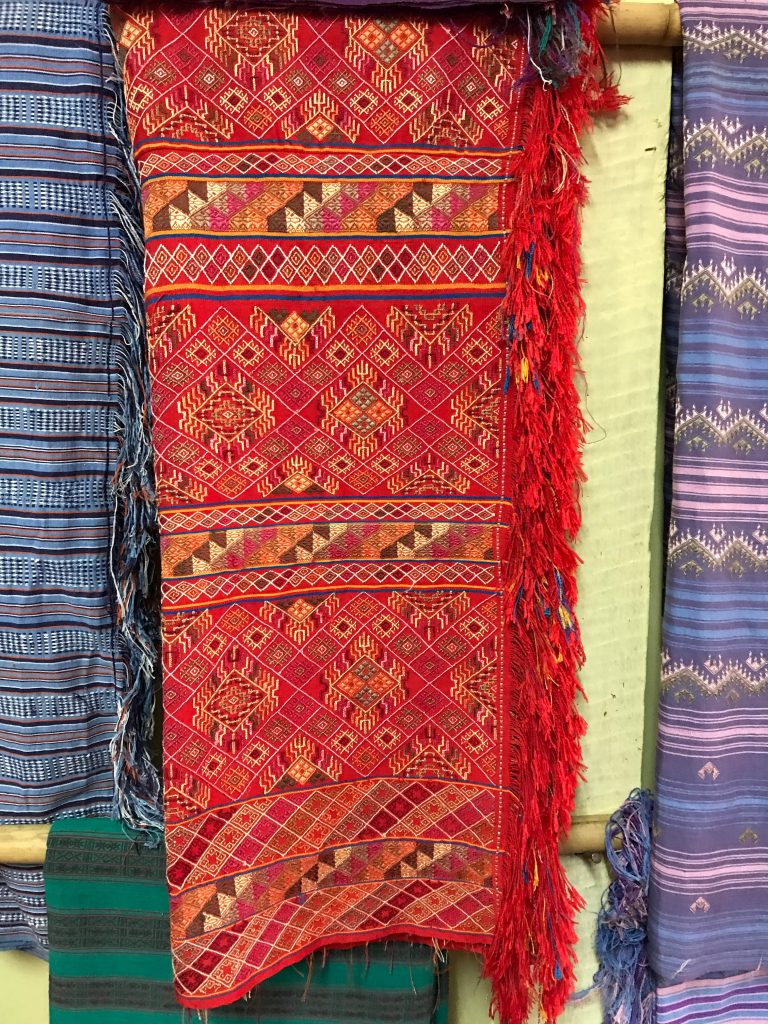
Unfortunately, the kiras we liked best were either silk and hugely expensive or slightly moldy and worn or battered in key places (or all of the above). So we bought a couple of presents for friends, and went back the way we had come.
I was amused by the Bumpa bus awaiting a new tire outside the handloom center. My first encounter with a Bumpa bus (immortalized, I think, as a “vomit comet” by Jamie Zeppa) was driving up to Yonphula behind a bus that was belching heavy black smoke. A couple of passengers were indeed hanging out of windows spitting miserably. Pema pulled out to pass just as the driver of the bus opened his door and spit betel juice onto the road. Pema gave a little honk, the driver closed his door, and in true Bhutanese style, gestured gracefully toward the road ahead as an invitation for Pema to pass.
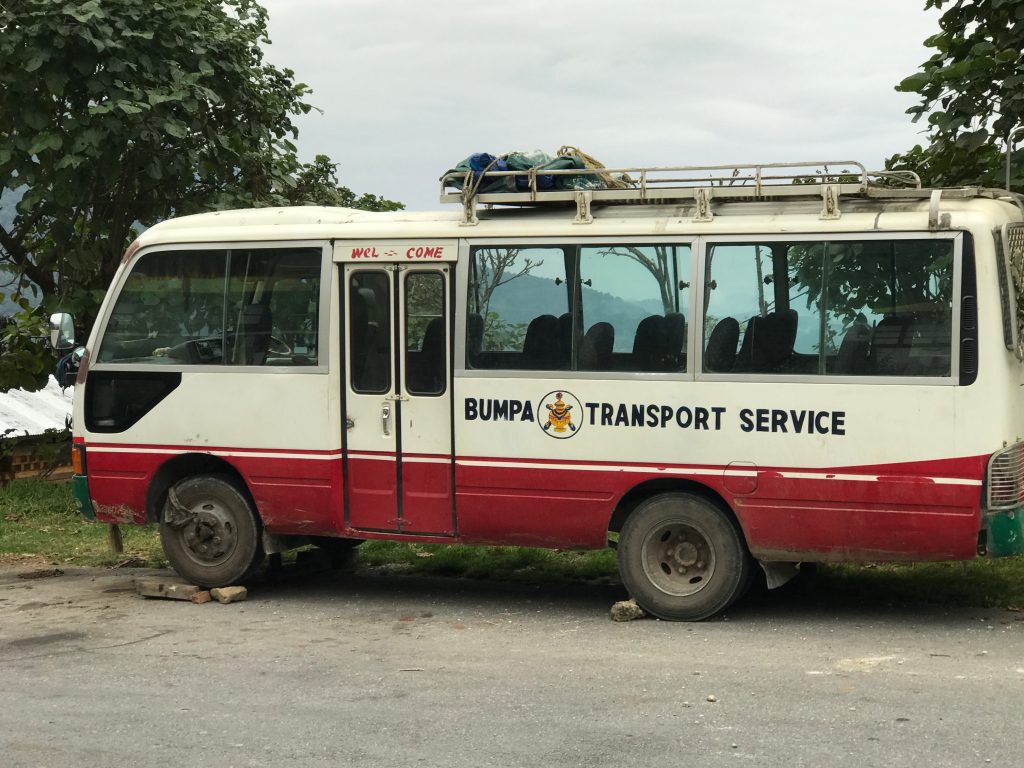
At James’s request, Tashi took us up to the “new” monastery at Barshong. “New” is a relative term: the monastery was hidden behind trees that were planted when it was first built. James guessed 15 years; Tashi thought perhaps 10.
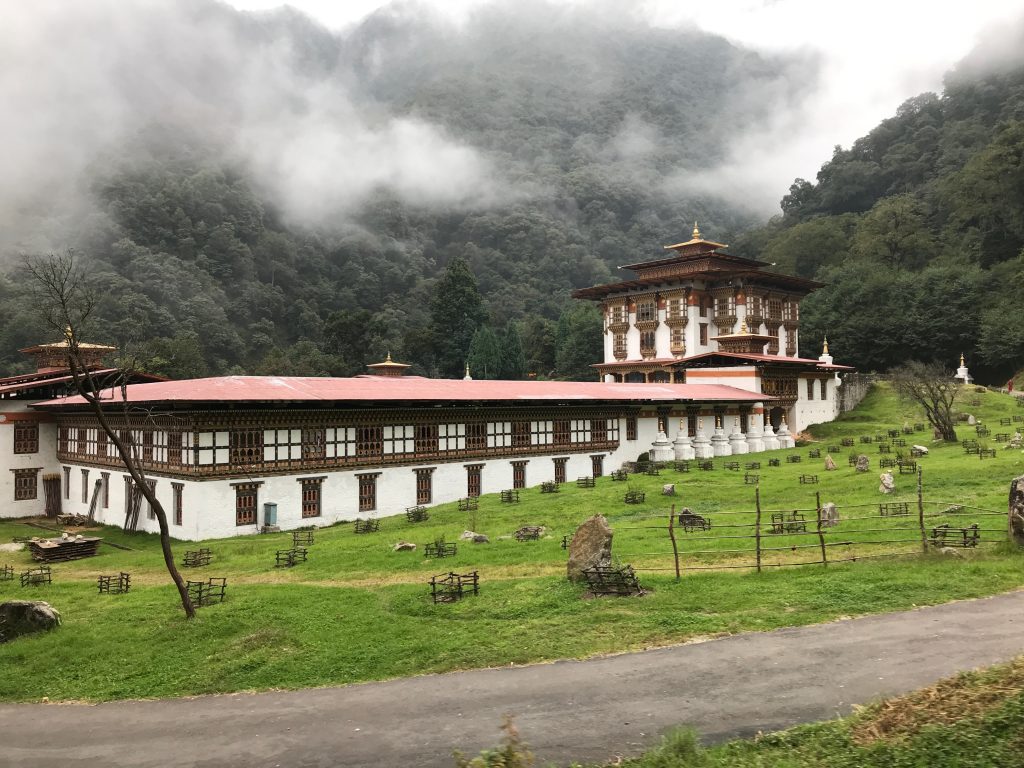
We walked up through an archway into a massive stone courtyard, with monk hostels on either side, and a temple straight ahead. Everyone seemed busy preparing for a coming tsechu: the horns and drums and space together created a powerful sense of atmosphere.
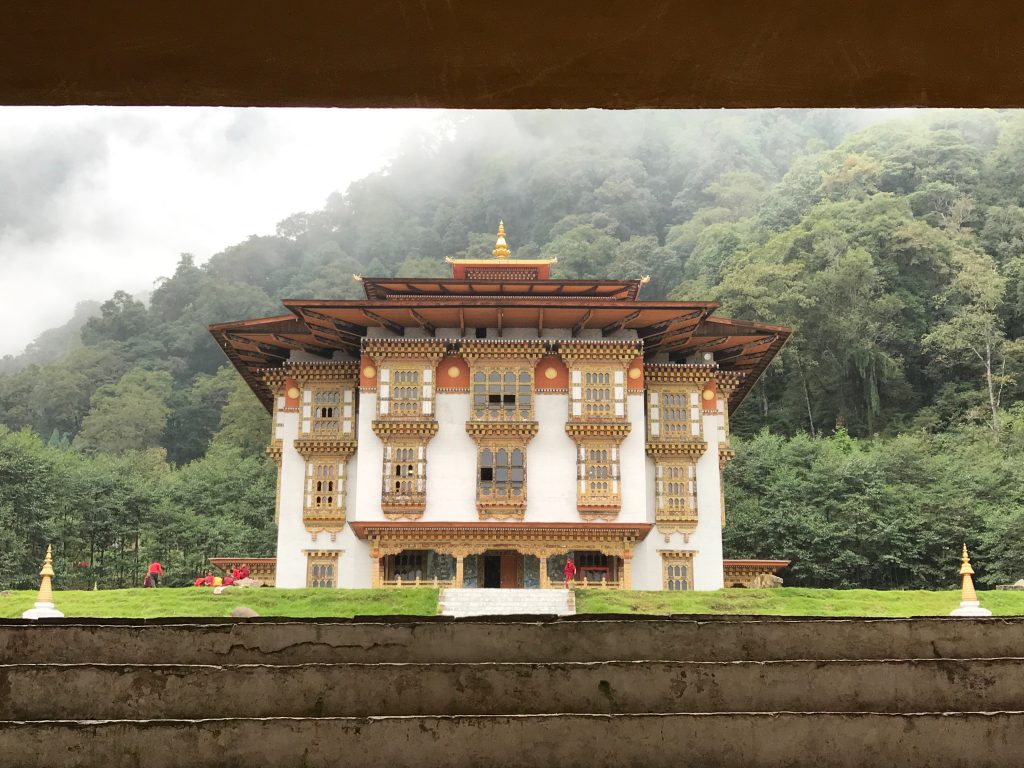
A young monk walked us through the temple, but his limited English and my limited knowledge of Kagyu history created some obstacles to understanding. The paintings on the walls featured various Karmapas and teachers such as Marpa, Milarepa, Naropa, and others.
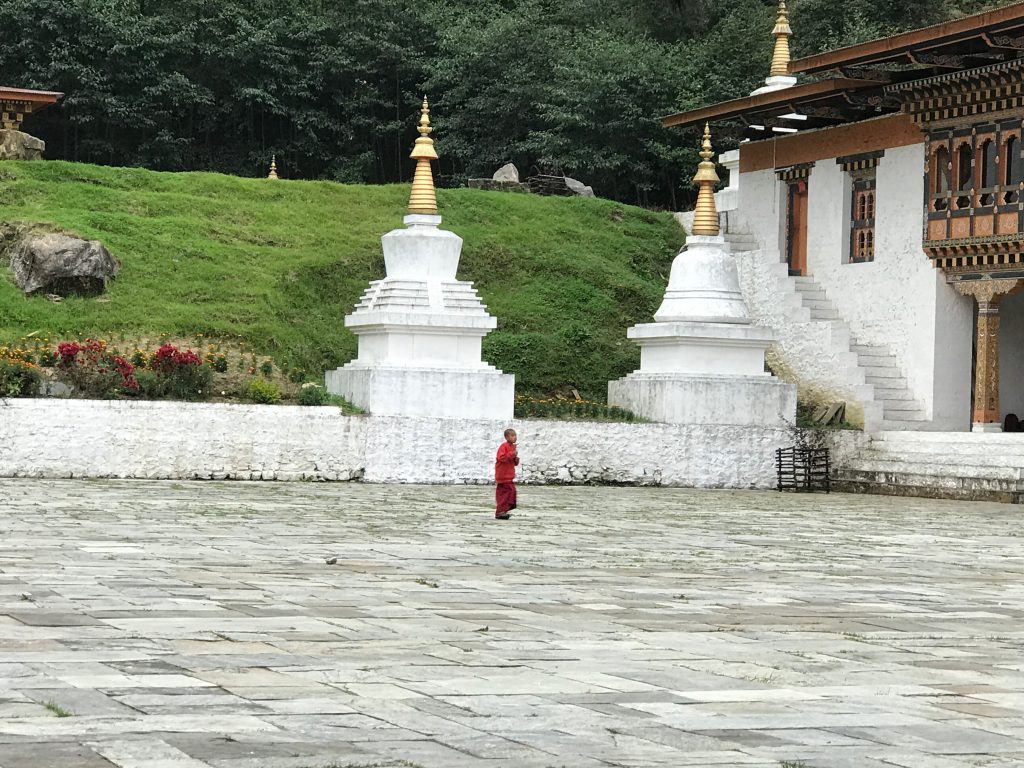
This is a private temple, Tibetan Kagyu or Karma Kagyu rather than Drukpa Kagyu. (As a Nyingma practitioner later explained to us, Tibetan Kagyu lineage is headed by the Karmapa in a line of descent traced back to the Buddha; Drukpa Kagyu goes back only to the Zhabdrung. Clearly, there are ways in which the different traditions assess one another.) Only Drukpa Kagyu monasteries are state supported; the others remain in the private sector.
Saturday morning, Jeremy ran in the school “marathon.” This was roughly 5 kilometers, running partway up the mountain, and then down the road. The teachers announced the course in Dzongkha and Jeremy didn’t feel able to ask for clarification. Jeremy ran with a sixth-grade boy and the two of them rather trailed the pack, though 5th and 6th graders started the race last, and the two of them refused (with some indignation on Jeremy’s part) to catch a ride on the downhill part of the course.
